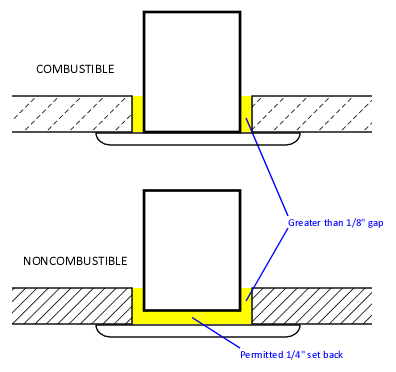kwired
Electron manager
- Location
- NE Nebraska
- Occupation
- EC
As I mentioned in another thread I was reading the code FAQ's section of 2012 Electrical Contractor magazine and had a couple of Q & A that I want to further discuss. Here is one more question I don't necessarily see eye to eye with the author over the response to a question.
The question was why the requirement for no more than an 1/8" gap around a box?
The key part of the response went like this: "If the gap around the box extends beyond the outside edge of the faceplate, someone could accidently access live parts."
Though I don't disagree with that statement, I don't feel that is the only reason for the requirement. We have had oversized plates for years to solve that problem. You can install oversized plates cover the entire gap and still be in violation of the 1/8 inch gap rule.
Drywall - the gaps are easy to repair - and the drywall finishers usually do repair these gaps. Other wall coverings I have caulked wide gaps and maybe installed an oversized plate for appearance, but the caulk was still necessary to fix the more than 1/8" gap.
Comments?
The question was why the requirement for no more than an 1/8" gap around a box?
The key part of the response went like this: "If the gap around the box extends beyond the outside edge of the faceplate, someone could accidently access live parts."
Though I don't disagree with that statement, I don't feel that is the only reason for the requirement. We have had oversized plates for years to solve that problem. You can install oversized plates cover the entire gap and still be in violation of the 1/8 inch gap rule.
Drywall - the gaps are easy to repair - and the drywall finishers usually do repair these gaps. Other wall coverings I have caulked wide gaps and maybe installed an oversized plate for appearance, but the caulk was still necessary to fix the more than 1/8" gap.
Comments?


